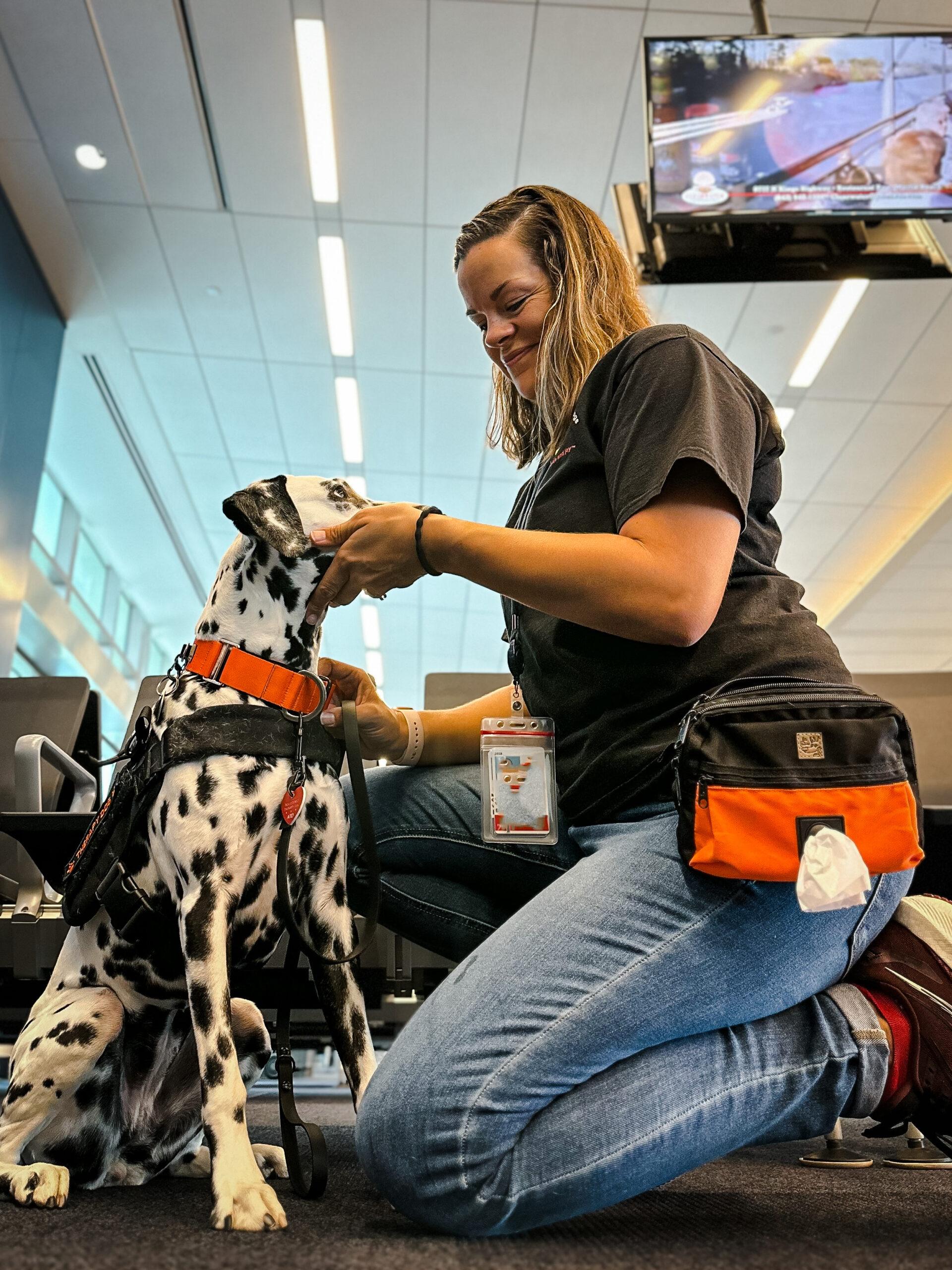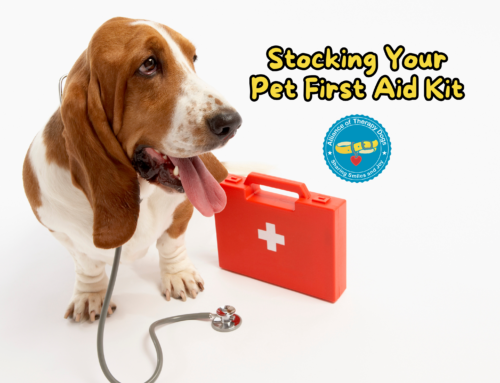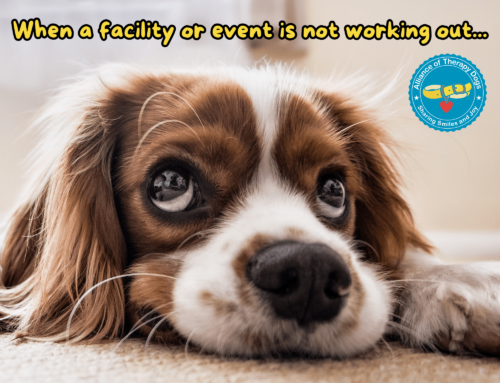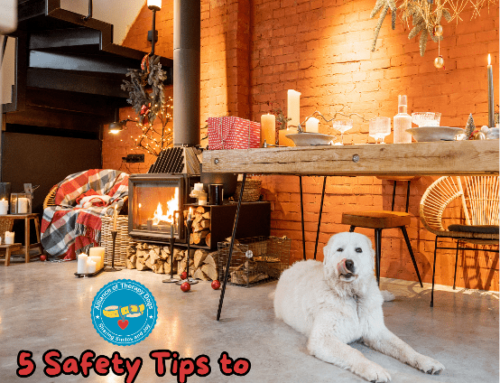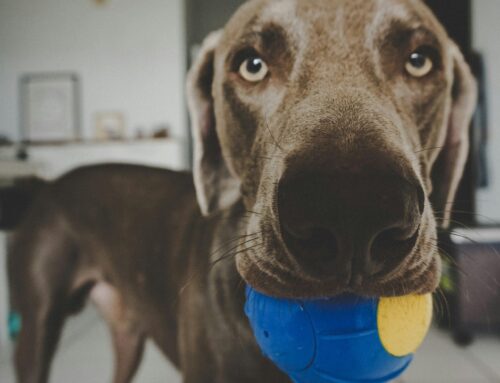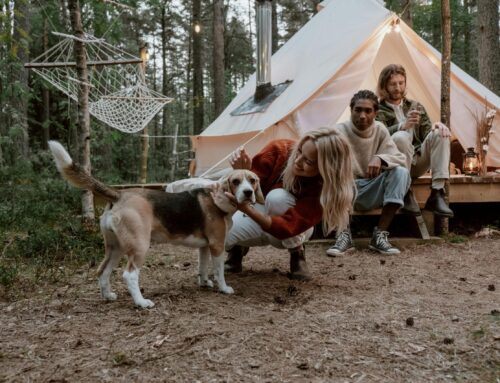Dog Skills to Practice In Everyday Situations
From nursing homes to airports, therapy dog skills shine as they share smiles and joy with those in need. Our talented canine companions may like to show off their abilities but they require practice to develop a strong foundation of skills to fulfill their role as healers. But these abilities aren’t just used for therapy dog visits! Practicing therapy dog skills in everyday situations can help enhance your dog’s training and strengthen the bond you share with them.
Here are some everyday situations where you and your pup can practice therapy dog skills.
Meeting New People
Along your therapy dog journey, you will meet many new faces. While it’s normal to experience some nervousness around new people, your dog needs to be comfortable with these interactions. You can use treats as a positive reinforcement tactic when your dog has a good interaction with someone new. Be sure to watch your dog’s body language. If you notice they are getting agitated, have a tucked tail, or are growling, remove them from the scene and reassure them with pats and soft words.
While socializing is usually done during puppyhood, an adolescent or older dog can still develop socialization skills. Introducing your dog to new people and new places is beneficial for improving your skills as a therapy dog team.
Keeping Focus
It’s normal for both humans and dogs to get distracted. The key to recovering from a distraction is to help your dog regain focus and get their attention turned to your commands. At therapy dog visits, you will most likely encounter some distractions like beeping hospital machines, rushed travelers, or excited passersby. It’s crucial that your dog knows to keep focus on you, the handler, and the individual they are currently visiting with. For instance, a dog that’s distracted by the airport hustle and bustle, may not provide a productive therapy visit for a stressed traveler who wishes to pet it. Teaching your dog the command “watch me” is a valuable therapy dog skill. To teach this trick, say your dog’s name and “watch me”. When they lock eyes with you, offer praise and reward them with a treat. You can practice the “watch me” command on dog walks or in more crowded areas like a dog park or a college campus.
Interactive Games
Playing games with your dog can help improve their physical health and mental stimulation. It also helps to reinforce therapy dog training. Some interactive games you can play are hide and seek or treasure hunt where you hide treats and have your dog sniff them out. These games encourage problem-solving and obedience.
For more fun game ideas, read our Indoor Games to Play With Your Dog blog post.
Further Therapy Dog Training
Whether it’s at a dog obedience program or training from home, developing therapy dog skills is valuable to you as a therapy dog handler and as a dog owner. To become an ATD member, no formal training is necessary but you may be interested in dog obedience programs that could help your dog become a certified therapy dog. You can also watch our certification test video to know what to expect from our therapy dog certification tests.
Practicing therapy dog skills in everyday situations is essential for reinforcing training and getting them ready for their important role. When practicing, be patient and use positive reinforcement. With motivation and patience, you can equip your therapy dog to succeed on their next visit.

